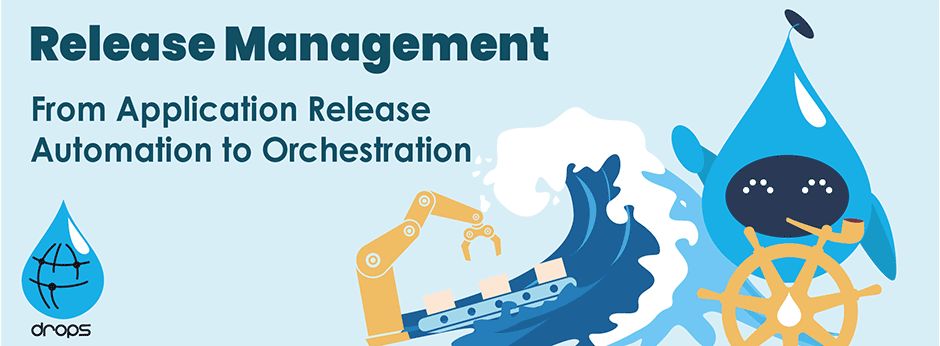
Release Management is the process by which software applications and updates are planned and deployed through a tiered series of environments, from development, through test and staging to production. In a really small shop, a simple checklist procedure may be adequate to ensure smooth deployment between stages. But Release Management as a discipline has evolved with DevOps and in direct response to the complex and specialized heterogeneity typical of modern cloud environments. Higher-level systems are required in order to manage diverse and inter-dependent application releases while minimizing downtime risk and ensuring compliance.
In this article, we’ll compare two aspects of modern Release Management – Application Release Automation (ARA) and Application Release Orchestration (ARO) - and look ahead to where the industry is leading.
Release Management
A release management system connects teams and processes organization-wide, bringing the transparency and control needed to prevent deployment incidents and speed their resolution. Traditionally, release managers schedule tasks, assign resources, and monitor each phase of development. There are different approaches to release management, depending on the size and structure of an organization. If monitoring a few simple applications, some tasks can be handled manually. But as an enterprise grows, so does the complexity involved in ensuring various value streams are prioritized, and that low-value tasks don’t sap resources.
Sophisticated release management tools assist managers by giving top-down monitoring capabilities of the entire system and automating much of the process. The more advanced systems use deployment analytics and visualization of flow metrics to help tune and optimize the value stream.
Application Release Automation
CI/CD pipelines allow for un-siloed end-to-end development and deployment, facilitating faster time-to-market delivery on new products and features, while also constantly consuming valuable feedback and metrics from end users. This allows for rapid evolution of the product and business, and the ability to fix bugs without significant disruption to the customer. Achieving CI/CD, however, relies on automating a variety of tasks right from the preparation of a release and its target environments to the sequencing of individual deployments in dependency order.
Application Release Automation (ARA) is an umbrella term that provides an engine for workload automation and integrates with various release management tools. Key aspects include, automated deployment, environment management, modeling, and release scheduling. ARA systems will also incorporate some form of version control and versioning, as well as an isolated testing environment.
ARA manages each of the environments a product passes through, packaging the code and its dependencies, as well as taking care of configuration and validation requirements prior to automatically deploying to the next environment.
Application Release Orchestration
While ARA may be successfully implemented at a large enterprise, complex multi-language and multi-platform operations often suffer from a balkanization of methods, metrics, and interfaces. Application Release Orchestration (ARO) takes organization-wide ARA processes and synthesizes them under a single platform.
ARO brings major advantages for organizations whose codebase is supported by a combination of both legacy and open-source languages, or who implement a hybrid or multi-cloud platform. Orchestration can become exceedingly complex, requiring a single point of control and governance. ARO provides a heightened level of coherence to operations managers and allows for greater communication across various teams via unified reporting and tracking methodologies.
Stakeholders that benefit most from ARO are release managers, the primary users of an ARO system, as well as DevOps teams and IT managers. ARO frees release managers from tasks that can be automated and allows them to focus on monitoring the system for issues or bottlenecks. Development groups also gain from having visibility to their various product life cycles in real time, freeing them from the constraints of rigid, static release schedules, and letting them flex with changing priorities. IT managers can also use ARO for a better understanding of their value streams, ability to access team performance, and monitor workflow.
The agile philosophies of Release Management, CI/CD, and DevOps are themselves relatively new to the IT industry, and still evolving to meet the needs of changing technologies and increased market demands. Born out of digital transformation, the DROPS solution from ARCAD Software has been designed to simplify the management of mixed releases comprising a legacy and cloud-native component - offering a secure, compliant, and configurable option that is both cloud independent and open source. DROPS ensures the integrity of your software and data across hybrid or multi-cloud, and ships with many other benefits such as no vendor lock-in on cloud providers and multi-script functionality. To find out more about DROPS, visit the ARCAD booth at Eclipsecon 2021 or reach out to the ARCAD team for a personalized demo.

